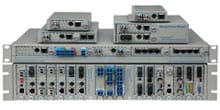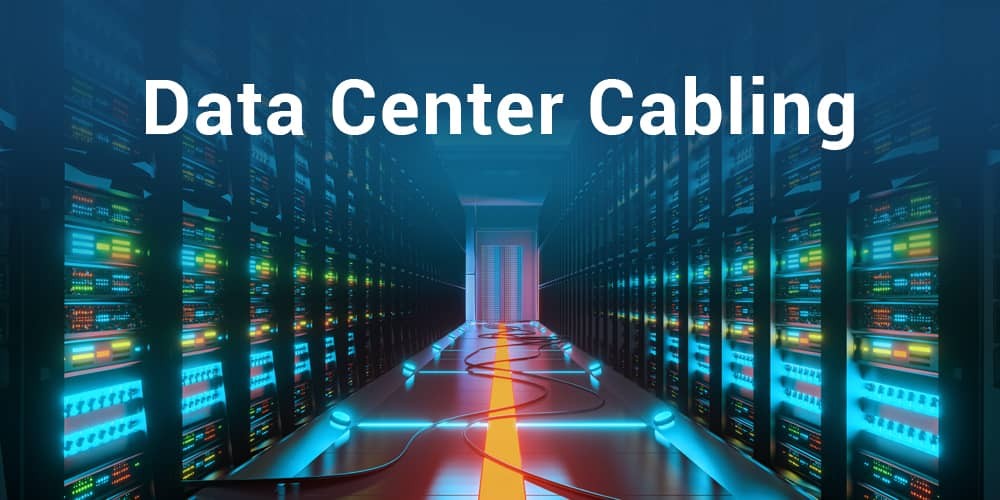- Products
- PoE Media Converters and Switches
- Ethernet & PoE Switches Product Selector
- Multi-Gigabit Ethernet and PoE Switches
- PoE PSE Commercial Switches
- PoE PSE Industrial Fiber Switches
- PoE Industrial Copper Extenders
- PoE Powered Media Converters
- PoE PSE Media Converters
- PoE Extenders & Injectors Product Selector
- Pluggable Transceivers Product Selector
- Single Pair PoE Products
- Product Lines

- iConverter Managed Multi-service Platform
- Copper to Fiber Media Converters
- Ethernet Media Converters
- 10 Gigabit Copper-to-Fiber
- 10/100/1000 Copper to 10 Gigabit Fiber
- 10/100/1000 Copper-to-Fiber with Integrated Management
- 10/100/1000 Industrial Copper-to-Fiber with Integrated Management
- 10/100/1000 Copper-to-Fiber with VLAN
- 10/100/1000 Dual Media Converter with VLAN
- Gigabit Copper-to-Fiber
- 10/100 Copper-to-Fiber with Integrated Management
- 10/100 Industrial Copper-to-Fiber with Integrated Management
- 10/100 Copper-to-Fiber with VLAN
- 10/100 Copper-to-Fiber
- Fast Ethernet Copper-to-Fiber
- Fast Ethernet Redundant Links
- 10Mbps Copper-to-Fiber
- 10Mbps Copper to Coax
- TDM Media Converters
- Serial Media Converters
- Ethernet Media Converters
- Fiber to Fiber Media Converters
- 10 Gigabit Fiber-to-Fiber Converter and Transponder
- 10 Gigabit Industrial Converter and Transponder
- SFP-to-SFP Fiber Converter and Transponder
- SFP-to-SFP Industrial Fiber Converter and Transponder
- Gigabit Fiber to-Fiber with 3 Rs
- 100/1000 Fiber-to-Fiber with 3 Rs
- Gigabit Fiber-to-Fiber
- Fast Ethernet Fiber-to-Fiber with 3 Rs
- Fast Ethernet Fiber-to-Fiber
- OC-3/STM-1 Fiber-to-Fiber
- OC-12/STM-4 Fiber-to-Fiber
- Carrier Ethernet Network Interface Devices
- CE 2.0 - 10G Demarcation NID
- CE 2.0 - 10/100/1000 Mult-port NID
- CE 2.0 - 10/100/1000 Mult-port NID with PoE
- CE 2.0 - 10/100/1000 8-Port NID
- CE 1.0 Service OAM - 10/100/1000 NID
- CE 1.0 Link OAM - 10/100/1000 Copper-to-Fiber NID
- CE 1.0 Link OAM - 10/100 Copper-to-Fiber NID
- CE 1.0 Link OAM - Gigabit Fiber-to-Fiber NID
- CE 1.0 Link OAM - Fast Ethernet Fiber-to-Fiber NID
- CWDM Multiplexers
- T1/E1 Multiplexers
- Ethernet Switch Modules
- Management System
- Chassis Options

- 1-Module Industrial Chassis

- RuggedNet Industrial Switches and Extenders
- Industrial PoE PSE Fiber Switches
- Multi-Gigabit Managed Industrial PoE+/BT Switches
- Multi-Gigabit Unmanaged Industrial PoE+/BT Switches
- 10G Managed 802.3bt PoE Switches
- 10G Unmanaged 802.3bt PoE Switches
- 10G Managed PoE+ Switches
- 10G Unmanaged PoE+ Switches
- 1G Managed PoE+ Switches
- 1G Unmanaged PoE+ Switches
- 1G Unmanaged 802.3bt PoE Switches
- 1G Managed 802.3bt PoE Switches
- Industrial SPE Switches
- Industrial Ethernet Switches
- Industrial PoE Copper Extenders
- Industrial Power Supplies

- OmniConverter Media Converter, Switches and Extenders
- PoE PSE Media Converters
- 10G Multi-Gigabit / Multi-Rate PoE Media Converter
- 10G Multi-Gigabit / Multi-Rate Media Converter
- 10/100 Multi-port PoE+ Media Converter
- 10/100 PoE+ Media Converter
- 10/100/1000 Multi-Port PoE+ Media Converter
- Industrial 10/100/1000 Multi-Port PoE+ Media Converter
- 10/100/1000 PoE+ Media Converter
- 10/100/1000 PoE++ 60W-100W Media Converter
- Industrial 10/100 Multi-port PoE+ Media Converter
- 1U Rack-Mount Shelf
- PoE PSE Compact Switches
- Multi-Gigabit Managed PoE+/BT Switches
- Multi-Gigabit Unmanaged PoE+/BT Switches
- 10G Managed 802.3bt PoE Switches
- 10G Unmanaged 802.3bt PoE Switches
- 10G Managed PoE+ Switches
- 10G Unmanaged PoE+ Switches
- 1G Managed PoE+ Switches
- 1G Unmanaged PoE+ Switches
- 1G Managed 802.3bt PoE Switches
- 1G Unmanaged 802.3bt PoE Switches
- Ethernet Switches
- Single Pair Ethernet (SPE)
- PoE Copper Extenders
- PoE Injectors

- miConverter Unmanaged Miniature Media Converters
- 10/100/1000 Copper-to-Fiber
- Industrial 10/100/1000 Copper-to-Fiber
- 10/100/1000 Ultra-Compact Copper-to-Fiber
- Gigabit Copper-to-Fiber
- 10/100/1000 Copper-to-Fiber PoE Powered
- 10/100 Copper-to-Fiber
- 10/100 Ultra-Compact Copper-to-Fiber
- 10/100 Copper-to-Fiber PoE Powered
- 18-Module Chassis
- Industrial 10/100 Copper-to-Fiber PoE Powered

- FlexSwitch Compact Switches
- Solutions
- Company
- Support
- How to Buy
What is Data Center Cabling?

Data center cabling refers to the physical network of cables connecting various equipment within a data center. The crucial infrastructure enables data transmission, power distribution, and overall functionality of the data center.
Types of Data Center Cabling
Data center cabling is divided into two categories: structured and unstructured cabling:
Structured Cabling
Structured cabling follows standardized layouts and predefined pathways for cables, ensuring organization and scalability. Structured cabling is preferred for its reliability, maintainability, and future-proofing capabilities.
Ethernet Cables
Ethernet cables remain relevant for shorter-distance connections within data centers. They are cost-effective and reliable, providing a balance for various cabling needs.
Fiber optic cables
Fiber optic cables transmit data by using light signals and are the backbone of modern data centers. For long-distance connections, their high bandwidth, low latency, and immunity to electromagnetic interference make them perfect for use.
Unstructured Cabling
Unstructured cabling is a non-standardized approach where cables are directly connected between devices, often resulting in a messy and disorganized layout. While initially cheaper, unstructured cabling can lead to maintenance challenges and hinder future expansion.

Data Center Cabling Standards
Data center cabling is the critical facilities' meticulously planned and executed nervous system, connecting equipment, transmitting data, and ensuring smooth operation. Standardized practices and guidelines, known as data center cabling standards, come into play to achieve this.
TIA-942:
Developed by the Telecommunications Industry Association (TIA), this standard is the go-to for designing and implementing structured cabling systems in data centers. It covers aspects like:
- Pathway and space: Specifies minimum requirements for cable pathways, equipment rooms, and horizontal cabling distances.
- Redundancy: Ensures critical connections have backups in case of failure.
- Cable management: Provides guidelines for organizing and labeling cables for easy identification and maintenance.
- Environmental considerations: Addresses factors like temperature, humidity, and airflow to ensure optimal cable performance.
ISO/IEC 24764:
This international standard focuses specifically on the cabling systems used within data centers. It builds upon TIA-942 and the European standard EN 50173-5, specifying requirements for:
- Balanced copper and optical fiber cabling: Covers different types of cables for various applications and distances.
- Performance: Sets minimum standards for data transmission speeds and signal quality.
- Connectors and installation practices: Defines acceptable connector types and proper installation techniques.
ANSI/BICSI 002:
Developed by the Building Industry Consulting Service International (BICSI), this standard provides broader data center design and operation guidelines, including cabling infrastructure. It covers aspects like:
- Planning and construction: Outlines best practices for planning, budgeting, and constructing data centers.
- Commissioning and protection: Defines procedures for testing and validating cabling systems after installation.
- Management and maintenance: Provides guidelines for ongoing maintenance and documentation of cabling infrastructure.
- Modular and containerized data centers: Addresses specific considerations for these modern data center types.
- Energy efficiency: Promotes sustainable data center design and operation practices, including cabling choices.
Data Center Cable Management
Data center cable management is the practice of organizing, labeling, and documenting the network of cables within a data center. It's a crucial aspect of maintaining a functional, efficient, and reliable data center operation. Here's a deeper dive into what data center cable management entails:
Why is Data Center Cable Management Important?
- Improved troubleshooting: Organized cables are easier to trace and troubleshoot, minimizing downtime and frustration.
- Enhanced performance: Proper airflow prevents overheating and optimizes equipment performance.
- Increased scalability: Well-managed cabling facilitates adding new equipment or expanding existing configurations.
- Safety and compliance: Properly secured cables reduce trip hazards and meet safety regulations.
Key Elements Of Data Center Cable Management
- Structured cabling: Using standardized pathways and components for organization and scalability.
- Labeling and documentation: Identifying cables for both physical and digital tracking.
- Cable routing and bundling: Utilizing cable trays, ladders, and sleeves to keep cables organized and protected.
- Slack management: Avoid excess cable length to prevent tangles and strain.
- Redundancy: Ensuring critical connections have backups in case of failure.
- DCIM software: Utilizing data center infrastructure management software for digital documentation and visualization.
Tips For Effective Data Center Cable Management
- Plan ahead: Design your cabling layout considering future growth and equipment upgrades.
- Standardize: Use consistent labeling, color coding, and cable management tools.
- Document everything: Maintain accurate cable paths, connections, and equipment records.
- Regularly check and update: Inspect cables for damage and update documentation as needed.
- Invest in training: Train staff on best practices for cable management.
FAQs
What Are the Components of Structured Cabling?
Entrance facilities, equipment rooms, backbone cabling, horizontal cabling, telecommunications rooms, and work area components are the six components of structured cabling. These components work harmoniously to create a standardized and organized cabling infrastructure, facilitating efficient data transmission and network connectivity within a facility.
Why Is Cable Management Important in Data Centers?
Cable management in data centers is crucial for several reasons:
- Organized cables reduce the risk of accidental disconnections and simplify troubleshooting, minimizing downtime.
- Proper cable management enhances airflow, preventing overheating and ensuring optimal equipment performance.
- It improves the overall aesthetics of the data center, making it easier to identify and address issues promptly.
Why Is Network Cabling Important?
Network cabling serves as the backbone of communication in modern IT infrastructure. It enables seamless data transmission between devices, ensuring connectivity and collaboration across networks. Reliable and well-designed network cabling is essential for maintaining efficient and uninterrupted communication and supporting the diverse range of applications and services in today's digital landscape.
Why Are Data Cables Needed?
Data cables are the lifelines of digital communication, serving the fundamental purpose of transmitting information between devices. Whether it's the internet, local area networks (LANs), or connecting various components within a data center, cables are pivotal in facilitating data exchange. The need for data cables arises from the ever-increasing demand for fast, reliable, and secure data transfer in both personal and professional settings.
Conclusion
By understanding data center cabling types and management practices, you can ensure a smooth-running, secure, and efficient data center operation. Remember, your cables are the lifeblood of your data center.
Need assistance with your Data Center design?
Omnitron Systems product specialists collaborate extensively with end-users, integrators, and channel partners to pinpoint and suggest the most cost-effective solutions for new network designs and upgrades to existing networks. Schedule a Free Network Design Session










